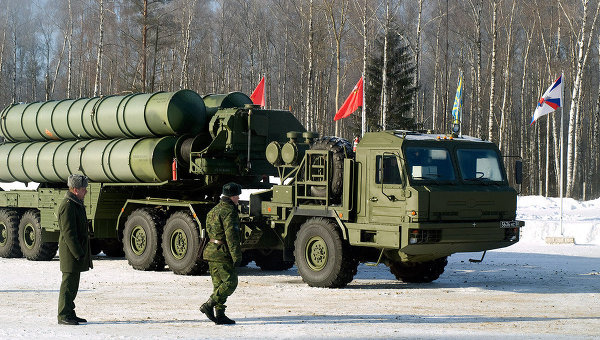
Russia to Deploy S-400 Anti-Aircraft Missiles in Kurile Islands
Publication: Eurasia Daily Monitor Volume: 8 Issue: 52
By:

In recent weeks there has been a great deal written about the Russian decision to reinforce the Kurile Islands. There is no doubt that this step, announced in early February, is connected with the public polemics and diplomatic fireworks over the islands and Russia’s relationship with Japan (ITAR-TASS, February 4; www.president.ru, February 9). But the decision to rearm Russian forces there appears to have been as much the outcome of a longer policy debate than was generated by the deterioration of Russo-Japanese relations since November 2010. Indeed, it is part of a broader restructuring of the entire Far Eastern Military District.
Deputy Defense Minister, Nikolai Pankov, said on February 28 that the Far Eastern grouping of Russian military forces is now receiving priority attention and that many of its components, not just the forces located on the Kurile Islands are being reinforced. These forces that are to be reinforced comprising the nuclear submarine force, aviation, ground forces, and others (Interfax-AVN, February 28). While most of the publicity this reinforcement has received is connected with the deployment of the S-400, Moscow’s newest and probably best anti-aircraft missile; that particular deployment is apparently not directly linked to the diplomatic imbroglio over the Kurile Islands. Indeed, in July 2010, Colonel-General Alexander Zelin Commander-in-Chief of the Russian Air Force, announced that two of the newest S-400 Triumf series would be deployed in the Russian Far East (Interfax-AVN, July 13, 2010).
Russia has good reason to make these overall deployments even though its diplomatic strategy towards Japan leaves much to be desired. In 2009, after North Korea’s second nuclear test, Moscow, which had again been caught by surprise, announced the deployment of the S-400 in the Russian Far East. Moreover, since 2009 there has been a steady accumulation of articles in the Russian military press, undoubtedly approved by the supreme command and political leadership, warning against the rise of Chinese military power, the threat it posed to the Russian Far East, and the implications of exercises like Operation Stride, the Chinese exercises in 2009. Indeed, Vostok-2010, the largest exercise in Russian history, and one that involved combined-arms operations, prominently featured a PLA attack on the Russian Far East and concluded with a simulated tactical nuclear weapon strike on the PLA in the form of a Tochka-61 missile.
Thus, the overall modernization of Russia’s air, naval, ground forces, including air defenses, anti-submarine forces, and other elements is not a move directed mainly or exclusively against Japan. Rather these are moves to deal with a swiftly deteriorating regional military situation. To be sure, it would appear that the choice of the Kuriles as the particular site of the S-400 and other deployments suggests a desire to teach Japan a public political lesson, presumably in the belief that Japan can be humiliated at no cost to Russia and will still make deals with Moscow. This logic aside, it should be noted that the early reports of the reinforcement of the Kuriles did not mention S-400’s (ITAR-TASS, February 4).
The announcement of the S-400 deployment came later. Indeed on February 11, the press was talking about airfields being built for the Air Force, not anti-aircraft missiles (RIA Novsti, February 11). Only four days later did the media begin reporting the deployment of the S-400 systems to the Kurile Islands (RIA Novosti, February 15).
Since then, the Defense Minister, Anatoliy Serdyukov, and other officials, have stated that Moscow does not intend to add more troops to the Kurile Islands, but rather to reinforce qualitatively the forces already depolyed there (Interfax, February 26). Indeed, the Chief of the General Staff, Army-General Nikolai Makarov stated on February 25, that the plans for these deployments to the Kurile Islands had not yet been finalized but shortly would be and then submitted to President Dmitry Medvedev (Interfax-AVN Online, February 25).
Since then, Moscow has revealed that it will not only send the S-400 to the Kurile Islands but also a Bastion mobile coastal rocket system combined with Russia’s supersonic Yakhont anti-ship winged missile will be deployed along with Tor-2 anti-aircraft missiles and Mi-28 attack helicopters (Interfax, Interfax-AVN Online, March 1). These deployments suggest Russian fears of air, amphibous, and ground attacks on the islands and its desire to meet these attacks relatively far out at sea as the Yakhont uses stealth technology, and can be launched above or below the surface of the sea, from the ground and from the air while also using stealth technology. The press reports about it also strongly intimated that its purpose is to provide the fleet, whose main mission there is homeland defense, with combat support or “combat stability” to use the Russian term since it can strike targets at a range of up to 300 kilometers (Interfax, March 1).
It would appear that there is a fortuitous coinciding of the overall strategic decision to defend the air and maritime approaches to the Russian Far East against China as well as the US-Japan alliance that intersected with the sharp reversals in Russo-Japanese relations. This will not, of course, make Japan any happier. And it provides China with a chance to pretend that these deployments solidify a Russo-Chinese tilt against Japan. But it is likely that privately nobody in Tokyo, Beijing, or Moscow is unaware of the larger context in which these simultaneous strategic games are being played.




